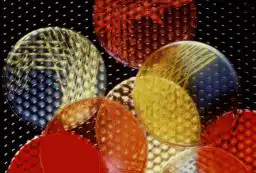Tasmanian researchers have found that krill, the small ocean crustaceans important for feeding the rest of the ocean’s animals, are able to protect themselves from the harmful ultra-violet light in the sun’s rays through a combination of diet and exercise.
Mr Stuart Newman, a PhD student at the University of Tasmania, worked with the Australian Antarctic Division (AAD) to study the behaviour of krill in response to increased ultra-violet light. He presented his work today (4 May) at ScienceNOW! in Melbourne.
“There were concerns that with the thinning ozone layer that krill could be at risk from ultra-violet light,” says Mr Newman.
“We found that krill tend to swim away from ultra-violet light and also had high concentrations of natural suncreens within them as a result of the algae they eat.”
Krill are crustaceans about the size of a little finger, and are found in enormous numbers around Antarctica. They provide an important food source for whales, seals, penguins and fish.
“While my research does not prove that krill are totally safe from the “ozone hole” which could get worse in the future, it does suggest that other environmental factors such as global warming may be of more immediate concern to the krill,” Mr Newman says.
Mr Newman studied live kill kept successfully in captivity at the AAD. His initial research suggested that krill were at serious risk from increased ultra-violet light, especially the UVB type of light, during springtime when the ozone layer above the Antarctic is most depleted.
“Although krill couldn’t detect UVB light by itself, UVB light usually occurs along with a less harmful form known as UVA light,” Mr Newman says. “The krill can detect this UVA light and will swim to deeper water to get away from it.
“This protects them from the more harmful UVB light.”
Mr Newman also found that krill contain high concentrations of natural sunscreens that can absorb the harmful UVB light.
They get these sunscreens from the algae they eat, and the more UVB there is the more the algae will produce the sunscreens.
Mr Newman’s PhD is supervised by Associate Professor David Ritz of the University of Tasmania’s School of Zoology, Dr Steve Nicol and Dr Harvey Marchant from the AAD, and Dr Walt Dunlop from the Australian Institute of Marine Science.





 Fresh Science is on hold for 2022. We will be back in 2023.
Fresh Science is on hold for 2022. We will be back in 2023.